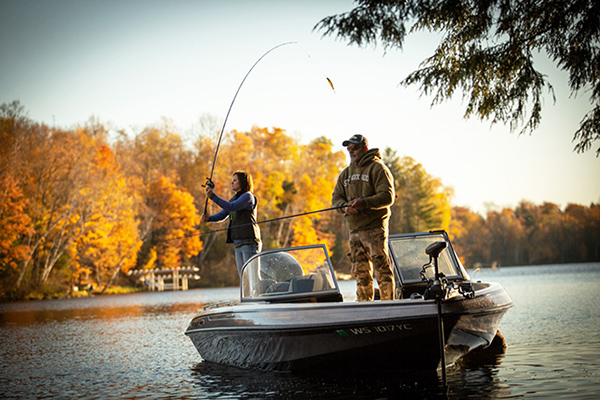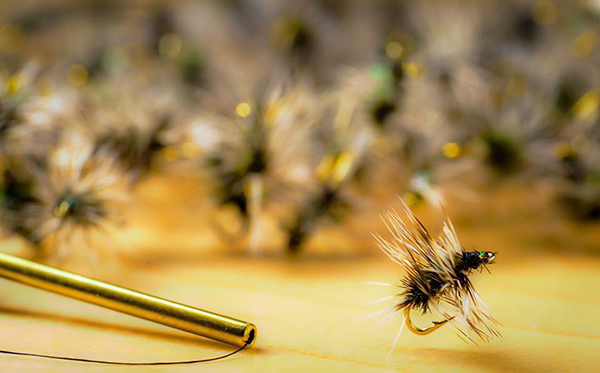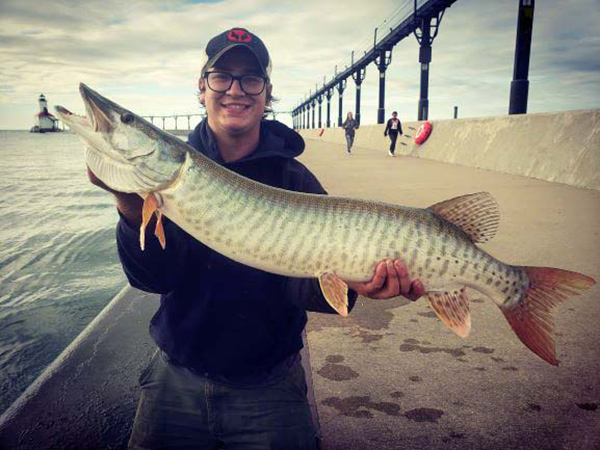- Details
St. Croix Report
 Downsizers Cater to Trends in Musky Fishing
Downsizers Cater to Trends in Musky Fishing
Park Falls, WI - A bucktail spinner was the prototypical lure employed throughout the early decades of musky fishing. In the years since, however, musky terminal tackle has become increasingly diverse and highly specialized. As lure manufacturers cranked out the big, bigger and gigantic baits demanded by musky anglers, St. Croix Rods eagerly owned the mission of designing and selling the equally specialized rods engineered and built to effectively fish every one of them.
Musky enthusiast and St. Croix pro, Chas Martin, has witnessed the evolution of musky fishing. "We're seeing the trend now that anglers are scoring on waters with down-sized presentations. In response, St. Croix has a whole series of rods that cater to these smaller presentations and the design of these rods allows anglers to effectively throw smaller baits ñ cast farther as well as work these lures in the accurate way that's required," Martin says.
- Details
The St. Joseph River Valley Fly Fishers will offer a one-day fly fishing workshop designed for women on Saturday, July 20, 2019, from 9 a.m. to 3 p.m.
The workshop will be a hands-on class featuring the basics of fly fishing including gear and tackle, casting, knots, entomology, and safety. The workshop will be taught on a small pond and students will have the opportunity to hook and land a fish.
All equipment will be provided for the class, although students are welcome to bring their own equipment if desired. Students will need to bring their own water bottle, hat, polarized sunglasses, sunscreen, pen or pencil for note-taking, and a one-day Indiana fly fishing license.
- Details
The St. Joseph River Valley Fly Fishers (SJRVFF) will host a “Beginner Fly Tying Course” beginning Thursday, Feb 14.
The course includes seven classes for tying proven fly patterns for the local area and beyond. Instructors Dustin New and Jeff Stanifer will cover fly tying tools and materials and how to use them to create a wide range of patterns.
Classes will be held each week at the South Bend Kroc Center Bend from 6:30 p.m. to 8:30 p.m.
The class cost for nonmembers of the SJRVFF is $30.00 but includes a club membership fee. SJRVFF will supply all the tools and materials to tie during the class. Interested students can sign up the night of the class or contact New for more information by calling him at 574-299-4914.
- Details
 Fly Fishers’ Tie-a-thon to Benefit Kids at Camp; Tiers Needed!
Fly Fishers’ Tie-a-thon to Benefit Kids at Camp; Tiers Needed!
Fly tiers from various Fly Fishers International and Trout Unlimited Clubs from around the Great Lakes region will come together next April for the 13th annual Tie-a-thon to tie and donate flies to Camp Kita and the Mayfly Project, both of which are groups that cater to youths.
The event is being held at the Elkhart, Ind. Conservation Club, which has donated their use of their facility again. More than 113,000 flies from previous Tie-A-Thons have been donated since the first Tie-a-thon was held.
Attendance isn’t required to help out. As the Tie-a-thon has done in previous years, flies will be accepted from individuals who are willing to donate their time and materials and finished flies for this year’s two worthy causes.
- Details
By Louie Stout
 There’s More Than Trout and Salmon in Lake Michigan
There’s More Than Trout and Salmon in Lake Michigan
Lake Michigan may be best known for its trout, salmon and yellow perch, but other gamefish species seem to add to the lake’s intrigue as well.
Including muskie. That’s right muskie.
In early September, Indiana DNR employee Ryan Henry was fishing for salmon off the lighthouse pier in Michigan City.
He was casting a Storm Mag Wart in ugly colors when a giant muskie hit. The fish, which was released after photos, measured close to 42 inches.
He also caught a coho and a nice king on the lure. Lake Michigan Biologist Brian Breidert, who had loaned him the lure, said it was one of the ugliest lure’s he’s ever seen.





